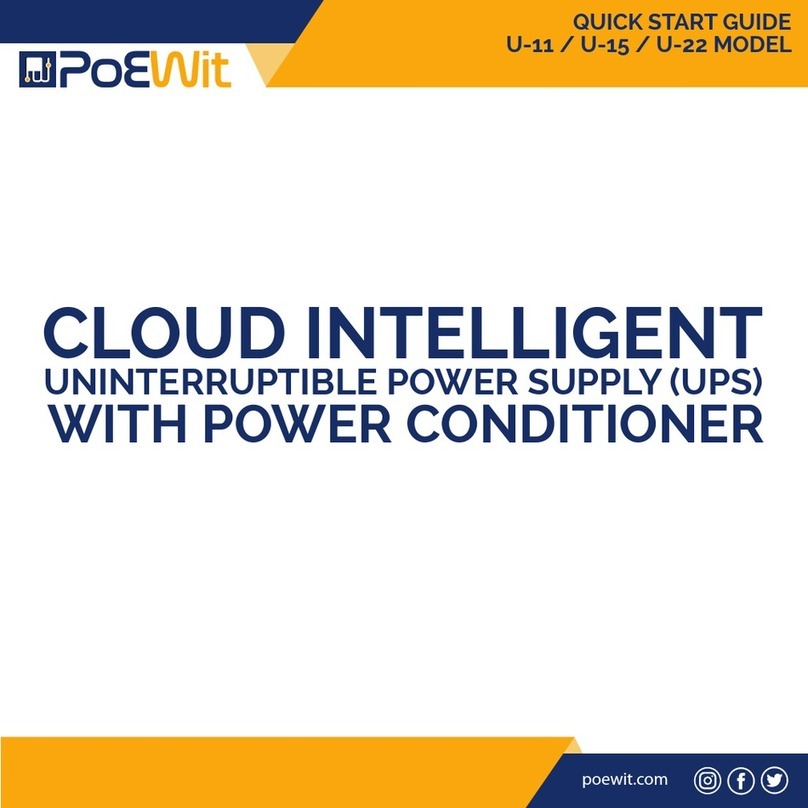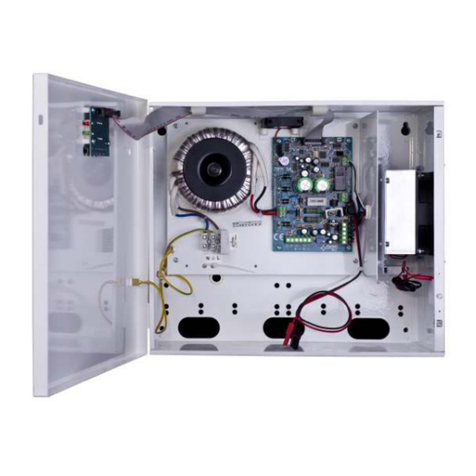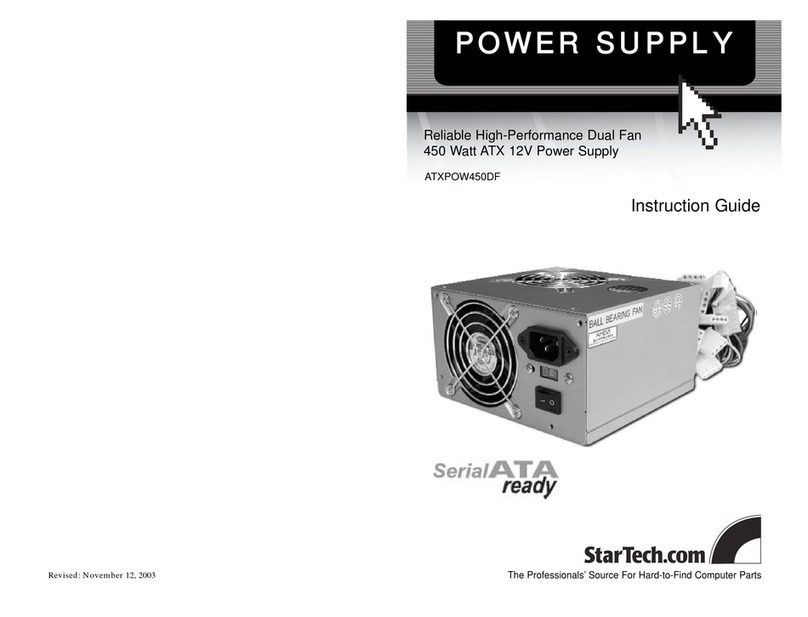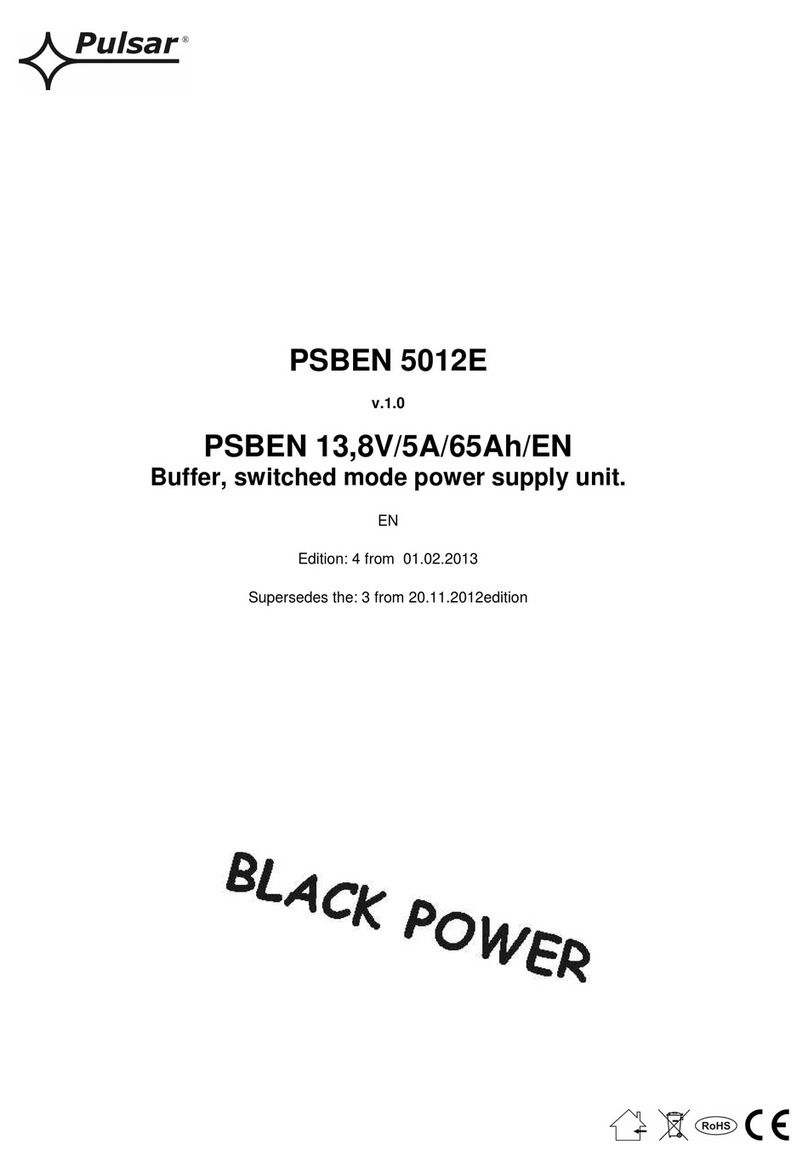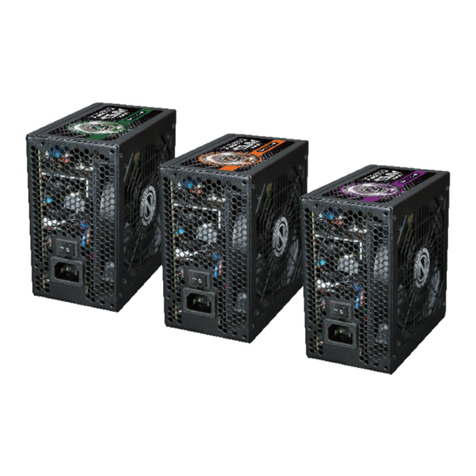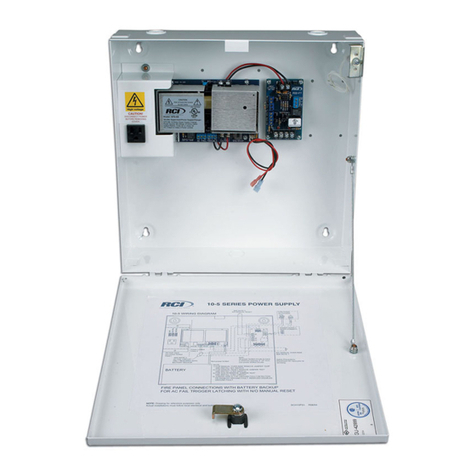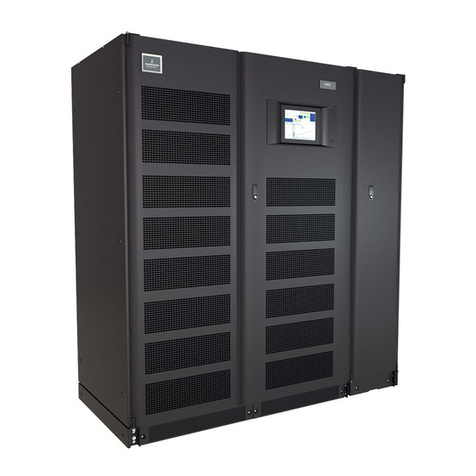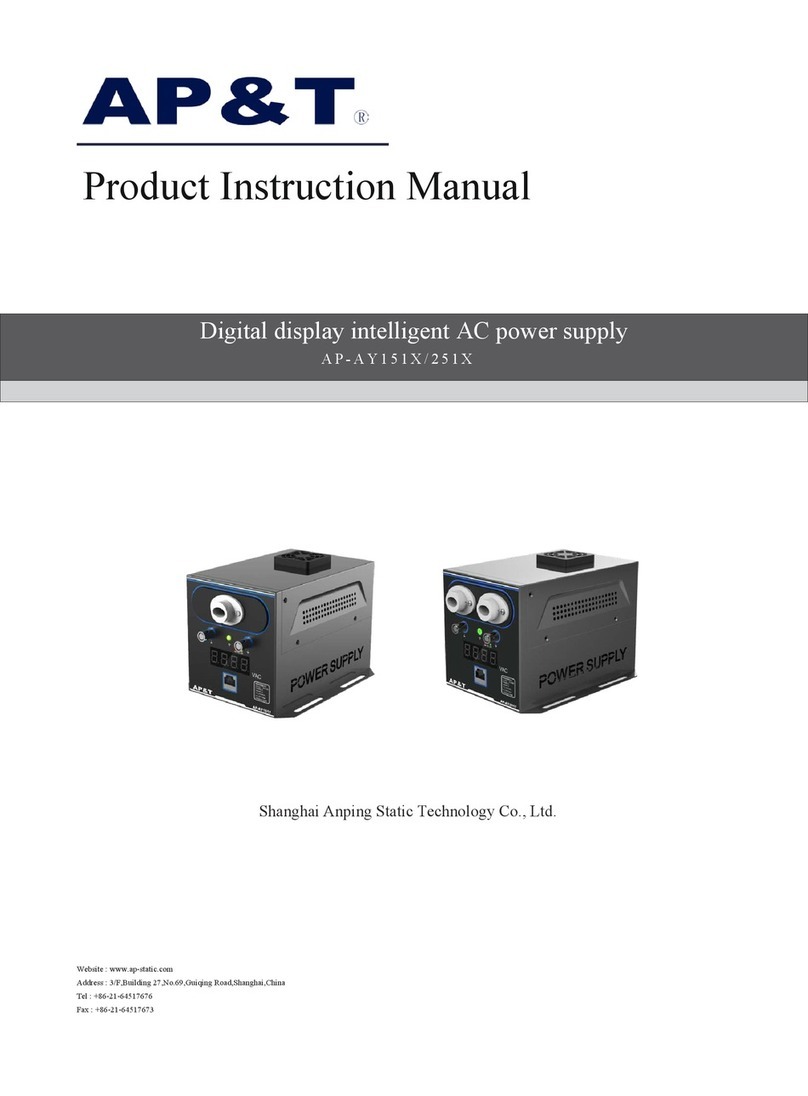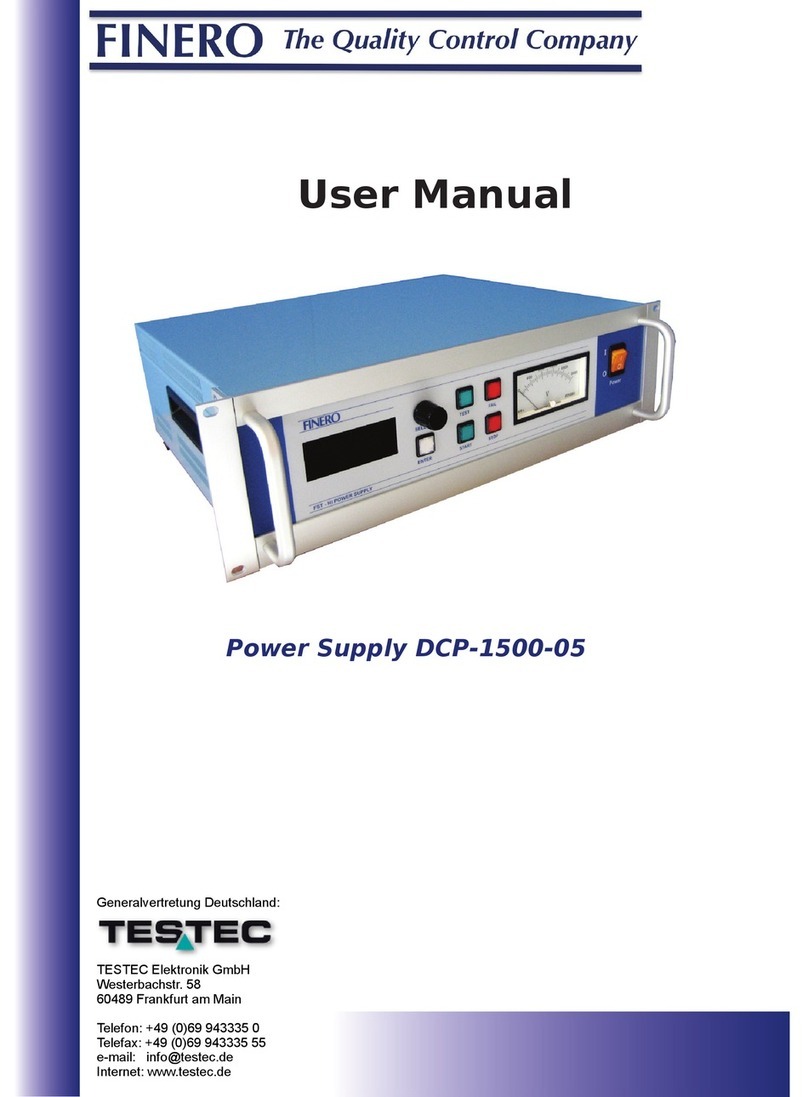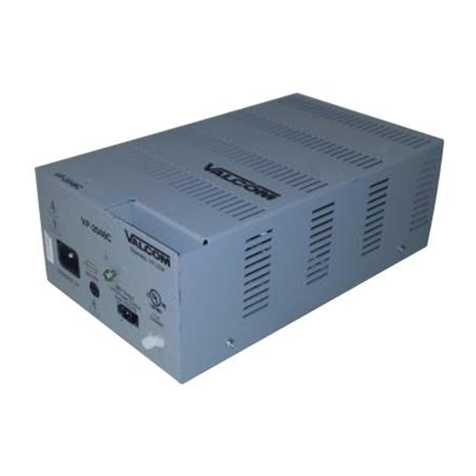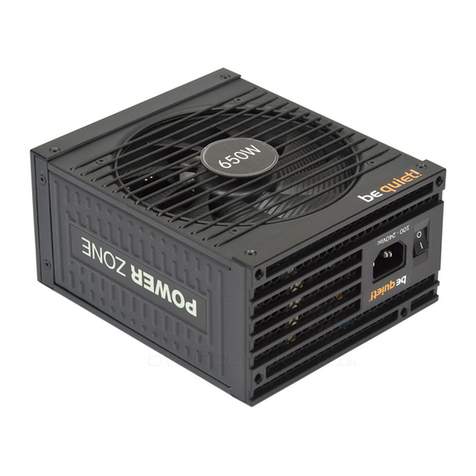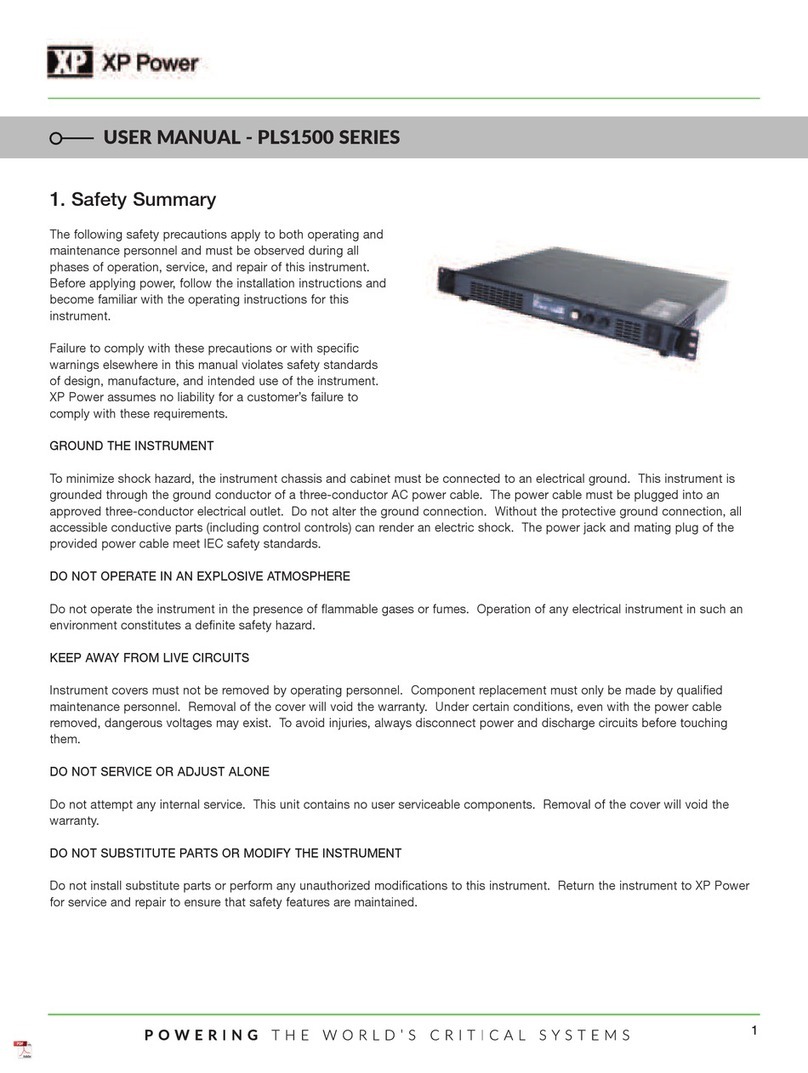Baldor BPS 2000 Series Installation instructions

-~
ARTISAN
®
~I
TECHNOLOGY
GROUP
Your definitive source
for
quality
pre-owned
equipment.
Artisan Technology
Group
Full-service,
independent
repair
center
with
experienced
engineers
and
technicians
on staff.
We
buy
your
excess,
underutilized,
and
idle
equipment
along
with
credit
for
buybacks
and
trade-ins
.
Custom
engineering
so
your
equipment
works
exactly as
you
specify.
•
Critical
and
expedited
services
•
Leasing
/
Rentals/
Demos
• In
stock/
Ready-to-ship
•
!TAR-certified
secure
asset
solutions
Expert
team
ITrust
guarantee
I
100%
satisfaction
All
tr
ademarks,
br
a
nd
names, a
nd
br
a
nd
s a
pp
earing here
in
are
th
e property of
th
e
ir
r
es
pecti
ve
ow
ner
s.
Visit our website - Click HERE

BPS Series 2000/3000
Power Supply
for DBSC 2000/3000
Installation & Operating Manual
5/01 MN1220
AC SERVO DRIVE

Table of Contents
Table of Contents iMN1221
Section 1
General Information 1-1. . . . . . . . . . . . . . . . . . . . . . . . . . . . . . . . . . . . . . . . . . . . . . . . . . . . . . . . . . . . . . . . . . . . . . . . . . . . . . .
Overview 1-1. . . . . . . . . . . . . . . . . . . . . . . . . . . . . . . . . . . . . . . . . . . . . . . . . . . . . . . . . . . . . . . . . . . . . . . . . . . . . . . . . . . . .
CE Compliance 1-1. . . . . . . . . . . . . . . . . . . . . . . . . . . . . . . . . . . . . . . . . . . . . . . . . . . . . . . . . . . . . . . . . . . . . . . . . . . . . . . .
Limited Warranty 1-1. . . . . . . . . . . . . . . . . . . . . . . . . . . . . . . . . . . . . . . . . . . . . . . . . . . . . . . . . . . . . . . . . . . . . . . . . . . . . . .
Product Notice 1-2. . . . . . . . . . . . . . . . . . . . . . . . . . . . . . . . . . . . . . . . . . . . . . . . . . . . . . . . . . . . . . . . . . . . . . . . . . . . . . . . .
Safety Notice 1-2. . . . . . . . . . . . . . . . . . . . . . . . . . . . . . . . . . . . . . . . . . . . . . . . . . . . . . . . . . . . . . . . . . . . . . . . . . . . . . . . . .
Section 2
Installation 2-1. . . . . . . . . . . . . . . . . . . . . . . . . . . . . . . . . . . . . . . . . . . . . . . . . . . . . . . . . . . . . . . . . . . . . . . . . . . . . . . . . . . . . . .
Receiving & Inspection 2-1. . . . . . . . . . . . . . . . . . . . . . . . . . . . . . . . . . . . . . . . . . . . . . . . . . . . . . . . . . . . . . . . . . . . . . . . .
Location Considerations 2-1. . . . . . . . . . . . . . . . . . . . . . . . . . . . . . . . . . . . . . . . . . . . . . . . . . . . . . . . . . . . . . . . . . . . . . . .
BPS LEDs’ 2-1. . . . . . . . . . . . . . . . . . . . . . . . . . . . . . . . . . . . . . . . . . . . . . . . . . . . . . . . . . . . . . . . . . . . . . . . . . . . . . . . . . . .
Mechanical Installation 2-2. . . . . . . . . . . . . . . . . . . . . . . . . . . . . . . . . . . . . . . . . . . . . . . . . . . . . . . . . . . . . . . . . . . . . . . . .
Electrical Installation 2-2. . . . . . . . . . . . . . . . . . . . . . . . . . . . . . . . . . . . . . . . . . . . . . . . . . . . . . . . . . . . . . . . . . . . . . . . . . .
System Grounding 2-2. . . . . . . . . . . . . . . . . . . . . . . . . . . . . . . . . . . . . . . . . . . . . . . . . . . . . . . . . . . . . . . . . . . . . . . . .
Line Impedance 2-3. . . . . . . . . . . . . . . . . . . . . . . . . . . . . . . . . . . . . . . . . . . . . . . . . . . . . . . . . . . . . . . . . . . . . . . . . . .
Line Reactors 2-3. . . . . . . . . . . . . . . . . . . . . . . . . . . . . . . . . . . . . . . . . . . . . . . . . . . . . . . . . . . . . . . . . . . . . . . . . . . . .
Load Reactors 2-3. . . . . . . . . . . . . . . . . . . . . . . . . . . . . . . . . . . . . . . . . . . . . . . . . . . . . . . . . . . . . . . . . . . . . . . . . . . .
Power Disconnect 2-4. . . . . . . . . . . . . . . . . . . . . . . . . . . . . . . . . . . . . . . . . . . . . . . . . . . . . . . . . . . . . . . . . . . . . . . . .
Protection Devices 2-4. . . . . . . . . . . . . . . . . . . . . . . . . . . . . . . . . . . . . . . . . . . . . . . . . . . . . . . . . . . . . . . . . . . . . . . . .
Power Connections 2-5. . . . . . . . . . . . . . . . . . . . . . . . . . . . . . . . . . . . . . . . . . . . . . . . . . . . . . . . . . . . . . . . . . . . . . . . . . . .
VCC and X10 Connections 2-6. . . . . . . . . . . . . . . . . . . . . . . . . . . . . . . . . . . . . . . . . . . . . . . . . . . . . . . . . . . . . . . . .
Dynamic Brake Resistor 2-6. . . . . . . . . . . . . . . . . . . . . . . . . . . . . . . . . . . . . . . . . . . . . . . . . . . . . . . . . . . . . . . . . . . .
Optional II/O Connections 2-8. . . . . . . . . . . . . . . . . . . . . . . . . . . . . . . . . . . . . . . . . . . . . . . . . . . . . . . . . . . . . . . . . . . . . . .
Power-Up Procedure 2-8. . . . . . . . . . . . . . . . . . . . . . . . . . . . . . . . . . . . . . . . . . . . . . . . . . . . . . . . . . . . . . . . . . . . . . . . . . .
Section 3
Specifications and Product Data 3-1. . . . . . . . . . . . . . . . . . . . . . . . . . . . . . . . . . . . . . . . . . . . . . . . . . . . . . . . . . . . . . . . . . .
Identification 3-1. . . . . . . . . . . . . . . . . . . . . . . . . . . . . . . . . . . . . . . . . . . . . . . . . . . . . . . . . . . . . . . . . . . . . . . . . . . . . . . . . .
Specifications 3-1. . . . . . . . . . . . . . . . . . . . . . . . . . . . . . . . . . . . . . . . . . . . . . . . . . . . . . . . . . . . . . . . . . . . . . . . . . . . . . . . .
Terminal Tightening Torque Specifications 3-1. . . . . . . . . . . . . . . . . . . . . . . . . . . . . . . . . . . . . . . . . . . . . . . . . . . . . . . . .
DB Resistor Selection 3-2. . . . . . . . . . . . . . . . . . . . . . . . . . . . . . . . . . . . . . . . . . . . . . . . . . . . . . . . . . . . . . . . . . . . . . . . . .
Dimensions 3-3. . . . . . . . . . . . . . . . . . . . . . . . . . . . . . . . . . . . . . . . . . . . . . . . . . . . . . . . . . . . . . . . . . . . . . . . . . . . . . . . . . .
Size B Dimensions & Mounting 3-3. . . . . . . . . . . . . . . . . . . . . . . . . . . . . . . . . . . . . . . . . . . . . . . . . . . . . . . . . . . . . .
Mounting Considerations 3-4. . . . . . . . . . . . . . . . . . . . . . . . . . . . . . . . . . . . . . . . . . . . . . . . . . . . . . . . . . . . . . . . . . .

Section 1
General Information
1-1 General Information MN1221
Copyright Baldor 1999, 2000. All rights reserved.
This manual is copyrighted and all rights are reserved. This document may not, in whole
or in part, be copied or reproduced in any form without the prior written consent of Baldor.
Baldor makes no representations or warranties with respect to the contents hereof and
specifically disclaims any implied warranties of fitness for any particular purpose. The
information in this document is subject to change without notice. Baldor assumes no
responsibility for any errors that may appear in this document.
Microsoft and MS–DOS are registered trademarks, and Windows is a trademark of
Microsoft Corporation.
UL and cUL are registered trademarks of Underwriters Laboratories.
Overview The BPS (Baldor Power Supply) is designed to provide power to the DBSC 2000/3000
series servo controls. A daisy chain communication with all DBSC controls allows the
BPS to detect if a control has a fault condition and provide soft–start operation. The
Regen or Dynamic Brake resistor connects to the BPS rather than on each individual
control.
CE Compliance A custom unit may be required, contact Baldor. Compliance to Directive 89/336/EEC is
the responsibility of the system integrator. A control, motor and all system components
must have proper shielding, grounding, and filtering as described in MN1383. Please
refer to MN1383 for installation techniques for CE compliance. For additional information,
refer to Sections 3 and 8 of this manual.
Limited Warranty
For a period of two (2) years from the date of original purchase, BALDOR will repair or replace without charge
controls and accessories which our examination proves to be defective in material or workmanship. This
warranty is valid if the unit has not been tampered with by unauthorized persons, misused, abused, or
improperly installed and has been used in accordance with the instructions and/or ratings supplied. This
warranty is in lieu of any other warranty or guarantee expressed or implied. BALDOR shall not be held
responsible for any expense (including installation and removal), inconvenience, or consequential damage,
including injury to any person or property caused by items of our manufacture or sale. (Some states do not
allow exclusion or limitation of incidental or consequential damages, so the above exclusion may not apply.) In
any event, BALDOR’s total liability, under all circumstances, shall not exceed the full purchase price of the
control. Claims for purchase price refunds, repairs, or replacements must be referred to BALDOR with all
pertinent data as to the defect, the date purchased, the task performed by the control, and the problem
encountered. No liability is assumed for expendable items such as fuses.
Goods may be returned only with written notification including a BALDOR Return Authorization Number and
any return shipments must be prepaid.

General Information 1-2MN1221
Product Notice Intended use:
These drives are intended for use in stationary ground based applications in industrial
power installations according to the standards EN60204 and VDE0160. They are
designed for machine applications that require variable speed controlled three phase
brushless AC motors.
These drives are not intended for use in applications such as:
–Home appliances
–Medical instrumentation
–Mobile vehicles
–Ships
–Airplanes
Unless otherwise specified, this drive is intended for installation in a suitable enclosure.
The enclosure must protect the control from exposure to excessive or corrosive moisture,
dust and dirt or abnormal ambient temperatures. The installation, connection and control
of drives is a skilled operation, disassembly or repair must not be attempted.
In the event that a control fails to operate correctly, contact the place of purchase for
return instructions.
Safety Notice:This equipment contains high voltages. Electrical shock can cause serious or fatal injury.
Only qualified personnel should attempt the start–up procedure or troubleshoot this
equipment.
This equipment may be connected to other machines that have rotating parts or parts
that are driven by this equipment. Improper use can cause serious or fatal injury. Only
qualified personnel should attempt the start–up procedure or troubleshoot this equipment.
–System documentation must be available at all times.
–Keep non-qualified personnel at a safe distance from this equipment.
–Only qualified personnel familiar with the safe installation, operation and
maintenance of this device should attempt start-up or operating procedures.
–Always remove power before making or removing any connections to this
control.
PRECAUTIONS: Classifications of cautionary statements.
WARNING: Indicates a potentially hazardous situation which, if not avoided, could result in injury
or death.
Caution: Indicates a potentially hazardous situation which, if not avoided, could result in damage
to property.
Continued on next page.

1-3 General Information MN1221
WARNING: Do not touch any circuit board, power device or electrical connection before you first ensure
that power has been disconnected and there is no high voltage present from this equipment
or other equipment to which it is connected. Electrical shock can cause serious or fatal
injury.
WARNING: Be sure that you are completely familiar with the safe operation of this equipment. This
equipment may be connected to other machines that have rotating parts or parts that are
controlled by this equipment. Improper use can cause serious or fatal injury.
WARNING: Be sure all wiring complies with the National Electrical Code and all regional and local codes
or CE Compliance. Improper wiring may cause a hazardous condition.
WARNING: Be sure the system is properly grounded before applying power. Do not apply AC power
before you ensure that grounds are connected. Electrical shock can cause serious or fatal
injury.
WARNING: Do not remove cover for at least five (5) minutes after AC power is disconnected to allow
capacitors to discharge. Electrical shock can cause serious or fatal injury.
WARNING: A DB Resistor may generate enough heat to ignite combustible materials. To avoid fire
hazard, keep all combustible materials and flammable vapors away from brake resistors.
Caution: Suitable for use on a circuit capable of delivering not more than the RMS symmetrical short
circuit amperes listed here at rated voltage.
Horsepower RMS Symmetrical Amperes
1–50 5,000
Caution: To prevent equipment damage, be certain that the input power has correctly sized protective
devices installed as well as a power disconnect.
Caution: Avoid locating the BPS immediately above or beside heat generating equipment, or directly
below water or steam pipes.
Caution: Avoid locating the BPS in the vicinity of corrosive substances or vapors, metal particles and
dust.
Caution: Baldor recommends not using “Grounded Leg Delta” transformer power leads that may
create ground loops and degrade system performance. Instead, we recommend using a four
wire Wye.
Caution: Power supplies are intended to be connected to a permanent main power source, not a
portable power source. Suitable fusing and circuit protection devices are required.
Caution: Do not tin (solder) exposed wires. Solder contracts over time and may cause loose
connections.
Caution: Electrical components can be damaged by static electricity. Use ESD (electro-static
discharge) procedures when handling this BPS.
Caution: The holes in the top and bottom of the enclosure are for cable clamps. Be sure to use an M4
bolt 12mm in length. Longer bolts may short circuit the electrical components inside the
BPS.

Section 2
Installation
Î
Î
Î
Ready
DB ON
Display
Identification
Monitor
Installation 2-1MN1221
Receiving & Inspection Baldor products are thoroughly tested at the factory and carefully packaged for shipment.
When you receive the BPS, there are several things you should do immediately.
1. Observe the condition of the shipping container and report any damage
immediately to the commercial carrier that delivered the product.
2. Remove the BPS from the shipping container and remove all packing materials.
The container and packing materials may be retained for future shipment.
3. Verify that the part number of the BPS you received is the same as the part
number listed on your purchase order.
4. Inspect the BPS for external physical damage that may have been sustained
during shipment and report any damage immediately to the commercial carrier.
5. If the BPS is to be stored for several weeks before use, be sure that it is stored
in a location that conforms to published storage humidity and temperature
specifications stated in this manual.
Location Considerations The location of the BPS is important. Installation should be in an area that is protected
from direct sunlight, corrosives, harmful gases or liquids, dust, metallic particles, and
vibration. Exposure to these can reduce the operating life and degrade performance.
Several other factors should be carefully evaluated when selecting a location for
installation:
1. For effective cooling and maintenance, the BPS should be mounted on a
smooth, non-flammable vertical surface.
2. At least 0.6 inches (15mm) top and bottom clearance must be provided for air
flow. Refer to Section 7 for mounting dimensions.
3. Altitude derating. Up to 3300 feet (1000 meters) no derating required. Derate
the continuous and peak output current by 1.1% for each 330 feet (100 meters)
above 3300 feet.
4. Temperature derating. From 5°C to 40°C ambient no derating required.
Above 40°C, derate the continuous and peak output current by 2.5% per °C
above 40°C. Maximum ambient is 50°C.
BPS LEDs’The system troubleshooting procedures involves observing the status of the “Ready”
LED, the “DB On”LED and the “Monitor”7 segment display. Table 2-1 provides
information related to the indications provided by these devices.
The DB LED is on whenever Dynamic Brake power is dissipated into the optional DB
(Dynamic Brake) resistor.
Table 2-1 Operating Mode Indications
Ready Monitor Status
OFF OFF BPS disabled or powered off
Green Decimal
Point BPS enabled, normal operation, no faults
OFF 0 Logic supply power loss
OFF 1 Logic supply undervoltage
OFF 2 Bus undervoltage
OFF 3 Loss of one or more power phases (L1, L2, L3)
OFF 4 Overtemperature
OFF 5 Dynamic brake fault
OFF 6 Reduced voltage starting feature is active and
input AC power is too high (L1, L2, L3)
Green L Reduced voltage starting feature is active

2-2 Installation MN1221
Mechanical Installation The BPS must be securely fastened to the mounting surface by the BPS mounting holes.
The location of the mounting holes is shown in Section 3 of this manual.
Electrical Installation All interconnection wires between the BPS, control, AC power source, motor, host control
and any operator interface stations should be in metal conduits. Use listed closed loop
connectors that are of appropriate size for wire gauge being used. Connectors are to be
installed using crimp tool specified by the manufacturer of the connector. Only class 1
wiring should be used.
System Grounding The BPS is designed to be powered from standard three phase lines that are electrically
symmetrical with respect to ground. System grounding is an important step in the overall
installation to prevent problems. The recommended grounding method is shown in
Figure 2-1 and 2-2.
Figure 2-1 Recommended System Grounding for UL
VL1
AC Main
Supply
Safety
Ground
Driven Earth
Ground Rod
(Plant Ground)
Four Wire
“Wye”
L1
L2
L3
Earth
L2 L3 U W
Route all 4 wires L1, L2, L3 and Earth
(Ground) together in conduit or cable.
Route all 4 wires U, V, W and Motor Ground together
in conduit or cable. Connect wires (including motor
ground) inside the motor terminal box.
Note: Wiring shown for clarity of grounding method
only. Not representative of actual terminal
block location.
BPS DBSC
Control
Ground per NEC
and Local codes.
Figure 2-2 Recommended System Grounding for CE
VL1
AC Main
Supply
Safety
Ground
Driven Earth
Ground Rod
(Plant Ground)
Four Wire
“Wye”
L1
L2
L3
Earth
L2 L3 U W
Route all 4 wires L1, L2, L3 and Earth
(Ground) together in conduit or cable.
Route all 4 wires U, V, W and Motor Ground together
in conduit or cable. Connect wires (including motor
ground) inside the motor terminal box.
Note: Wiring shown for clarity of grounding method
only. Not representative of actual terminal
block location.
BPS DBSC
Control
Note: Use shielded cable for control signal wires. Route control signal wires in
conduit. These wires must be kept separate from power and motor wires.
Enclosure Backplane
All shields

Installation 2-3MN1221
System Grounding Continued
Ungrounded Distribution System
With an ungrounded power distribution system it is possible to have a continuous current
path to ground through the MOV devices. To avoid equipment damage, an Isolation
transformer with a grounded secondary is recommended. This provides three phase AC
power that is symmetrical with respect to ground.
Input Power Conditioning
The BPS is designed for direct connection to standard three phase lines that are
electrically symmetrical with respect to ground. Certain power line conditions must be
avoided. An AC line reactor or an isolation transformer may be required for some power
conditions.
SIf the feeder or branch circuit that provides power to the BPS has permanently
connected power factor correction capacitors, an input AC line reactor or an
isolation transformer must be connected between the power factor correction
capacitors and the BPS.
SIf the feeder or branch circuit that provides power to the BPS has power factor
correction capacitors that are switched on line and off line, the capacitors must
not be switched while the BPS is connected to the AC power line. If the
capacitors are switched on line while the BPS is still connected to the AC power
line, additional protection is required. TVSS (Transient Voltage Surge
Suppressor) of the proper rating must be installed between the AC line reactor
or an isolation transformer and the AC input to the BPS.
Line Impedance The BPS requires a minimum 3% line impedance. If the impedance of the incoming
power does not meet the requirement for the BPS, a 3 phase line reactor can be used to
provide the needed impedance in most cases. Line reactors are optional and are
available from Baldor.
The input impedance of the power lines can be determined as follows:
Measure the line to line voltage at no load and at full rated load.
Use these measured values to calculate impedance as follows:
%Impedance +(VoltsNo Load Speed *VoltsFull Load Speed)
(VoltsNo Load Speed) 100
Line Reactors Three phase line reactors are available from Baldor. The line reactor to order is based on
the full load current of the motor (FLA). If providing your own line reactor, use the
following formula to calculate the minimum inductance required.
L+(VL*L 0.03)
(I 3
Ǹ 377)
Where: L Minimum inductance in Henries.
VL-L Input volts measured line to line.
0.03 Desired percentage of input impedance.
I Input current rating of BPS.
377 Constant used with 60Hz power.
Use 314 if input power is 50Hz.

2-4 Installation MN1221
Power Disconnect A power disconnect should be installed between the input power service and the BPS for
a fail safe method to disconnect power. The BPS will remain in a powered-up condition
until all input power is removed from the BPS and the internal bus voltage is depleted.
Protection Devices The AC input power lines must have suitable protection devices installed. Input and
output wire size is based on the use of copper conductor wire rated at 75 °C. Use the
recommended circuit breaker or fuse types as follows:
Circuit Breaker: 1 phase, thermal magnetic.
Equal to GE type THQ or TEB for115 or 230 VAC
3 phase, thermal magnetic.
Equal to GE type THQ or TEB for 230 VAC or
GE type TED for 460 VAC.
Fast Action Fuses: Buss KTN on 230 VAC or
Buss KTS on 460 VAC, Buss FRS or equivalent.
Time Delay Fuses: Buss FRN on 230 VAC or
Buss FRS on 460 VAC or equivalent.
Table 2-2 describes the wire size to be used for power connections and the ratings of the
protection devices.
Recommended fuse sizes are based on the following:
115% of maximum continuous current for time delay fuses.
150% of maximum continuous current for fast or very fast acting fuses.
Table 2-2 Wire Size and Protection Devices
L1, L2, L3 Incoming Power X3 Logic Power
Maximum Input Input Fuse Wire Gauge Wire Gauge
Catalog Number Maximum
Continuous
Amps
Input
Breaker Fast
Acting Time
Delay AWG mm2Input
Fuse AWG mm2
BPS2060 60A 90A 90A 70A 6 13.3 Internal 16 1.0
BPS2100 100A 150A 150A 115A 3 26.7 Internal 16 1.0
BPS3030 30A 50A 50A 40A 8 8.37 Internal 16 1.0
BPS3050 50A 70A 80A 60A 6 13.3 Internal 16 1.0
Note: All wire sizes are based on 75°C copper wire, 3% line impedance. Higher temperature smaller gauge wire may
be used per NEC and local codes. Recommended fuses/breakers are based on 25°C ambient, maximum
continuous output current and no harmonic current.

Section 1
General Information
Installation 2-5MN1221
Power Connections Figure 2-3 Power Connections
L1 L2 L3
Alternate *
Fuse
Connection Note 1
L1 L2 L3
L1 L2 L3
*Circuit
Breaker
Earth
*Components not provided with BPS or Control.
See Recommended Tightening Torques in Section 3.
Note 2
BPS
* Line
Reactor
Note 1
Note 2
A1 B1 C1
A2 B2 C2
A1 B1 C1
DBSC
Control
VCC+
VCC+
VCC–
VCC–
DC BUS
1
2
3
4
X10
1
2
3
4X10
Logic
Power *
Notes:
1. See Protection Device description in this section.
2. Metal conduit or shielded cable should be used. Connect conduits so
the use of a Reactor or RC Device does not interrupt EMI/RFI shielding.
3. Use the same gauge wire for Earth as used for L1, L2, L3 connections.
4. Reference EMC wiring in control manual (MN1220 Section 8).
X3
Logic
Power
Input
(1 Phase)
Note 3 & 4
Important:
Be sure to connect the proper voltage for X3
Logic Power input. Look at the last digit of the
identification number to determine voltage:
BPSxxx0 = 230VAC –1 phase
BPSxxx1 = 115VAC –1 phase

2-6 Installation MN1221
VCC and X10 Connections DC power connections are shown in Figure 2-4. Copper bus bars connect VCC+, VCC–
and GND between each module from the BPS to the last control. X10 connections are
daisy chained from the BPS to each control as shown.
Figure 2-4 Copper Bus Bar Installation and X10 Connections
DBSC
Control
BPS
See Terminal Tightening Torques
in Section 3 of this manual.
VCC+
VCC–
VCC+
VCC–
DBSC
Control
X10
1
2
3
4
X10
1
2
3
4
X10
1
2
3
4
See Section 3 for correct bus bar
length information.
If an optional 24VDC power supply or battery backup is used instead of the BPS, the
connections to X10 must be made as shown in Figure 2-5. This allows position
information and other memory related information to be stored when AC power is
removed from the BPS.
Figure 2-5 External 24VDC connections (not BPS)
X10
1
2
3
4
External 24VDC
Supply Jumpers must be installed to prevent a fault condition.
(+)
(–)
Dynamic Brake Resistor An external DB (Dynamic Brake) resistor must be installed to dissipate excess power
from the DC bus during motor deceleration operations. For selection of the DB resistor,
refer to the specifications located in Section 3 of this manual. DB hardware is connected
at the R1 and R2 terminals.

Installation 2-7MN1221
Figure 2-6 Connector Locations
BALDOR
L1 L2 L3 R1 R2
X3
ÎÎ
ÎÎ
Ready
DB On
ÎÎ
ÎÎ
Monitor
VCC+
VCC–
X10 +24VDC
0VDC
To DBSC Control
(DC BUS)
Logic Power Input
(1 Phase)
X4
X4 - Diagnostic
1 Ready
2 Alarm
3 DB_ON
4 N.A.
5 Reset
6 CREF
7 Fault+
8 Fault–
9 CIV
10 CGND
See Terminal Tightening Torques
in Section 3 of this manual.
Ready +
Ready –
To DBSC Control
(Logic Power)
Incoming Power
(230 or 460 VAC 3 PH) To Dynamic Brake
(DB) Resistor
VCC+
VCC–
1
2
3
4
1
See Figure 2-7
L
N
10
Cable Clamp
10

Section 1
General Information
2-8 Installation MN1221
Optional I/O Connections Connector X4 contains the input and output connections for the BPS (Baldor Power
Supply). Connection to the X4 I/O terminal strip is optional. No connections are required
for normal operation. However, to monitor BPS status or to “Reset”the BPS you may
make some or all of these optional connections.
Status monitor output connections (Opto Isolated Outputs)
Status monitor output connections are shown in Figure 2-7. The output signals (X4-1, 2
and 3) can then be connected to an external device (referenced to X4-10). These internal
contacts close when active and apply the voltage +24VDC at the output.
The Alarm Output (X4–2) activates immediately when one of the following faults occur:
Loss of AC Power, Phase Loss (AC input), Loss of Logic Power, Bus Undervoltage,
Overtemperature or Dynamic Brake fault. The other Status Monitor outputs (X4–1 and 3)
have a 100ms delay before activation.
Note: The maximum current draw when all three outputs are active must not exceed
100mA.
Figure 2-7 Status Monitor Output Connections
Ready
Alarm
DB_ON
CIV (+VDC)
CGND
Output signals are referenced
to X4-10 (100mA maximum).
1
2
3
9
10
X4 - Diagnostic
Customer provided
+12VDC to +30VDC
power source
+
–
Reset connection
Connection of the Reset input is shown in Figure 2-8. This is useful to reset after a fault
condition. The reset input voltage is +24VDC (12 to 30VDC @ 10mA) and must be
applied for at least 60 ms.
Figure 2-8 Reset Input
X4 - Diagnostic
5 Reset
6 CREF Customer provided power source
+12VDC to +30VDC
+
–
Fault Relay connection
Fault Relay connection is shown in Figure 2-9. The fault relay output can be connected to
an external relay or other device. This internal normally closed contact opens when a
fault condition occurs. The fault list is the same as for the Alarm Output.
Figure 2-9 Fault Relay
X4 - Diagnostic
7 Fault (+)
8 Fault (–)Customer provided power source
115VAC @ 0.3A or
+24VDC (+12 to +30VDC) @ 0.8A
non–inductive
Power-Up Procedure Refer to the manual for the DBSC control MN1220.

Section 3
Specifications and Product Data
Specifications and Product Data 3-1MN1221
Identification
DBSC Series
Power Supply
BPS XX
Input AC Power
(2=230VAC 60/50Hz)
(3=460VAC 60Hz/400VAC 50Hz)
Continuous DC Current Rating
Power Supply XX
0 = 230VAC Logic Power
1 = 115VAC Logic Power
03 3000 30 Amperes
05 3000 50 Amperes
06 2000 60 Amperes
10 2000 100 Amperes
Rating DBSC Continuous DC Current
Specifications
BPS20 BPS30
Description Unit 060 100 030 050
Input Bus Voltage –Nominal (Range) VAC 230 (3f)
(180-264; 60Hz
180-230; 50Hz)
460 (3f)
(400-528; 60Hz
340-457; 50Hz)
Input Frequency Hz 50 / 60 ±5%
Nominal Output Bus Voltage VDC 320 650
Nominal Output Bus Current ARMS 60 100 30 50
Peak Output Bus Current ARMS 120 200 60 100
Input Logic Voltage –Nominal (Range) VAC 115 (+6% –10%; 60Hz only 1 phase)
230 (+6% –10%; 50/60Hz 1 phase)
Input Logic Current –Nominal (Range) *AMP 2.4A (@115) or 1.2 (@230)
Output Logic VDC +24 (+20% –15%)
Output Logic ADC 6.9 (for 3 Controls) 8.0 (for 5 Controls)
Mounting –Panel or Thru Wall
Package Size B
Weight lb(kg) 33(15)
Dynamic Brake Switching Threshold On
Off VDC 388
375 776
750
Dynamic Brake Peak Power kVa 22.8 38 22.8 38
Dynamic Brake Maximum Switching Current Apeak 60 100 30 50
Dynamic Brake Maximum Duty Cycle % 25 25
Dynamic Brake Maximum Inductive Load µH 100
Operating Temperature Range °C+0 to 40. Above 40°C, derate the continuous and peak
output current by 2.5% per °C above 40°C.
Maximum ambient is 50°C.
Storage Temperature Range °C–25 to +70
Humidity % 10% to 90% non-condensing (IEC68–2–38)
Class of Protection (Enclosure) IP20
Operating Altitude Feet
(Meters) To 3300 feet (1000 meters). Derate the continuous and
peak output current by 1.1% for each 330 feet
(100 meters) above 3300 feet (1000 meters).
Shock 10G (DIN IEC 68–2–6/29)
Vibration 1G @ 10 –150 Hz (according to DIN IEC 68–2–6/29)
All values at 25°C unless otherwise stated.
*Maximum surge current <150msec = 15A (BPS20); 30A (BPS30)

3-2 Specifications and Product Data MN1221
Terminal Tightening Torque Specifications
Tightening Torque
BPS Size GND L1, L2, L3 R1, R2 +VCC, –VCC, GND
Lb-in Nm Lb-in Nm Lb-in Nm Lb-in Nm
Size B 35-46 4.0-5.0 20-27 2.3-3.0 20-27 2.3-3.0 35-46 4.0-5.0
DB Resistor Selection
Size RG
3.54
(90)
5.5 (140) for 44 watt
8.9 (228) for 100 watt
13.2 (337) for 320/640 watt
3.9
(100)
M4 2.6 (65)
1.7 (45)
L
L = Clearance Requirements (all sizes):
2″(51mm) top and bottom
1″(26mm) left and right side
Table 7-3 DB Resistor
Catalog No. Catalog No.
(320 Continuous Watts) Catalog No.
(640 Continuous Watts)
BPS2060 RG6.8 RG6.4
BPS2100 RG3.9 RG4.1
BPS3030 RG27A RG23
BPS3050 RG15 RG16

Specifications and Product Data 3-3MN1221
Dimensions
Size B Dimensions & Mounting
14.05
(357)
15.14
(385)
4.13
(105)
15.75
(400)
A
B
A
B
Cutout
for
Thru-Wall
Mounting
AA
BB
0.00
0.55 (14)
0.77 (20)
14.38 (385)
13.99 (355)
13.25 (337)
0.00
0.57 (15)
1.16 (30)
2.38 (61)
2.97 (76)
3.54 (90)
Reference this edge to
measure distance to mount
next enclosure.
8.58
(218) 4.33
(110)
Thru Wall
Mounting
Flange
Surface
Mount
Flange
Thru Wall
Dimensions
Holes coded “A”and “B”.
Mounting hole locations for surface
mounting. Recommended hardware
1/4″-20 or M6 thru hole .25″(6.4mm)dia.
Cutout Dimensions:
13.15 X 3.43
(334 x 87)
A
B A B
A B

3-4 Specifications and Product Data MN1221
Dimensions Continued
Mounting Considerations
Position
X
Reference this edge
to measure distance
to mount next
enclosure.
D = Distance to next reference edge
D
Note:
Always mount the BPS in the first position
from left to right. This allows proper
installation of the power bus bars.
Position
Y
R R R = Reference Edge
For safe operation, allow a clearance distance between each control and on all sides of each control.
Mounting and Bus Bar Information
Position X Position Y Distance to next Power Bus Bar
Position X
Size Position Y
Size Distance to next
reference edge “D”Part Number Length Hole Spacing
D D 10.6 (270) V1093641 11.74(298) 10.64(270)
D C 10.5 (267) V1093651 4.93(125) 3.78(96)
D B 10.5 (267) V1093651 4.93(125) 3.78(96)
C C 5.5 (140) V1093661 6.82(173) 5.52(140)
C B 5.5 (140) V1093661 6.82(173) 5.52(140)
B D 4.3 (109) V1093681 12.10(307) 11.03(280)
B B 4.2 (106) V1093671 5.24(133) 4.18(106)
B C 4.2 (106) V1093671 5.24(133) 4.18(106)

BALDOR ELECTRIC COMPANY
P.O. Box 2400
Ft. Smith, AR 72902–2400
(501) 646–4711
Fax (501) 648–5792
Baldor Electric Company
MN1221 Printed in USA
5/01 C&J 1500
CH
TEL:+41 52 647 4700
FAX:+41 52 659 2394
D
TEL:+49 89 90 50 80
FAX:+49 89 90 50 8491
UK
TEL:+44 1454 850000
FAX:+44 1454 850001
I
TEL:+39 11 562 4440
FAX:+39 11 562 5660
AU
TEL:+61 29674 5455
FAX:+61 29674 2495
F
TEL:+33 145 10 7902
FAX:+33 145 09 0864
CC
TEL:+65 744 2572
FAX:+65 747 1708
MX
TEL:+52 47 61 2030
FAX:+52 47 61 2010

Artisan
Technology
Group
is
an independent supplier
of
quality pre-owned equipment
Gold-standard
solutions
Extend the life
of
your
critical industrial,
commercial, and military systems
with
our
superior service and support.
We
buy
equipment
Planning to
upgrade
your current
equipment? Have surplus equipment taking
up shelf space? We'll give it a
new
home.
Learn
more!
Visit us at artisantg.com for more info
on price quotes, drivers, technical
specifications, manuals, and documentation.
Artisan Scientific
Corporation
dba
Artisan
Technology
Group
is
not
an affiliate,
representative,
or
authorized
distributor
for
any
manufacturer
listed herein.
We're here to make your life easier.
How
can
we
help you today?
(217)
352-9330
Isales@artisantg.com Iartisantg.com
This manual suits for next models
1
Table of contents
